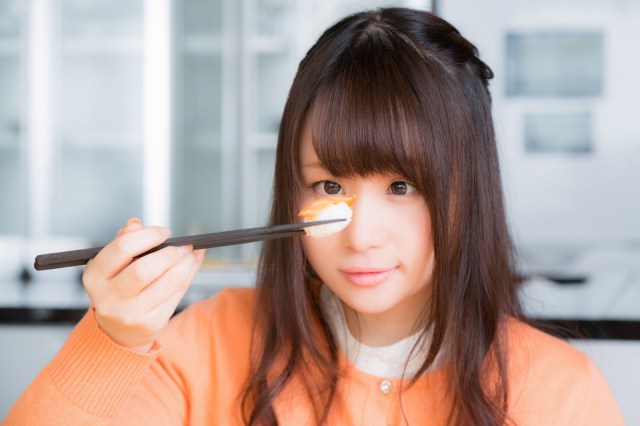
One group of Japanese people is surprisingly squeamish about eating sushi made the traditional way.
Fine food and good hygiene are two things Japan values, which oddly enough makes for an unusual mental conflict when it comes to sushi, the country’s most representative cuisine.
The most popular kind of sushi, nigiri sushi, the kind with fish or other toppings on rectangles of rice, is traditionally made by hand. The word nigiri itself even means “grasp” or “hold” (it’s the same base word as in the phrase te wo nigiru/to hold hands with someone). But while just about everyone would think it’s a plus to have a skilled chef personally prepare their food, as opposed to some sort of automated contraption, in the case of pressing nigiri sushi no gloves or utensils are used. The chef directly and firmly presses his palms and fingers directly onto the fish and rice that’ll soon be touching your tongue, and unlike, say, a hand-kneaded hamburger patty or doughy pastry, the sushi won’t be sterilized by a cooking flame before you eat it.
Since this is the standard way of making and serving sushi, it’s something that most Japanese people are OK with (or at least they can mentally block out their concerns long enough to enjoy their meal). However, there is a portion of the Japanese dining public that finds the system kind of gross, and to get a handle on how many people feel that way Internet portal Sirabee ran an online survey asking “Do you feel squeamish about eating sushi that someone else pressed by hand?”
1,733 responses were collected, with a little more than one in six people, 15.6 percent, saying they feel hesitant to pop a piece of hand-made nigiri sushi in their mouth. What’s more, there were some pretty large differences between different age/gender groups.
“I feel squeamish about eating sushi that someone else pressed by hand.”
● Men age 10-19 23.3 percent
● Women 10-19: 16.4 percent
● Men 20-29: 17.4 percent
● Women 20-29: 14 percent
● Men 30-39: 20.3 percent
● Women 30-39: 19 percent
● Men 40-49: 14.9 percent
● Women 40-49: 12.9 percent
● Men 50-59: 10.4 percent
● Women 50-59: 17.8 percent
● Men 60-69: 13.5 percent
● Women 60-69: 13.7 percent
With the majority of sushi chefs being men who’re middle-aged or older, one might have expected young women to be the least enthusiastic about eating hand-made onigiri sushi. Instead, though, it was teen boys who were most likely to dislike the idea, and by a pretty wide margin. However, male responses mellowed with age, with guys in their 50s having the fewest hang-ups about hand-pressed sushi, followed by women in their 40s, men in their 60s, and women in their 60s.
Two possible reasons for older diners greater acceptance for nigiri sushi come to mind pretty quickly. The first is that in modern times, some sushi restaurants have machines that make the sushi, or at least press the rice into blocks before employees add their toppings. But because the introduction of such machines is relatively recent, diners in their 50s and up grew up in a world where hand-pressed nigiri sushi was pretty much the only kind available, and are more likely to be accustomed to the concept.
The second reason is that restaurants that do use sushi-making machines tend to be larger, less expensive eateries, such as Japan’s chain conveyor belt sushi restaurants. At fancier sushi restaurants, which ostensibly serve better cuts of fish, nigiri sushi is still always pressed by hand, and the perceived higher quality of the ingredients, as well as the more personal hospitality of the chef, might be more than enough to offset any hygiene quibbles that might otherwise make a gourmet diner feel uneasy.
But if teen boys are going out to eat sushi with their pals. Budgetary concerns mean that nine times out of ten they’re going to a conveyor belt sushi joint. Machine-pressed sushi is the norm they grow up with, and so even if their demographic usually has a stronger resistance to “gross” things, the traditional nigiri sushi making method likely feels like a lot of unnecessary touching.
Source: Sirabee via Niconico News via Jin
Top image: Pakutaso
Insert images: Wikipedia/トトト, Pakutaso
● Want to hear about SoraNews24’s latest articles as soon as they’re published? Follow us on Facebook and Twitter!